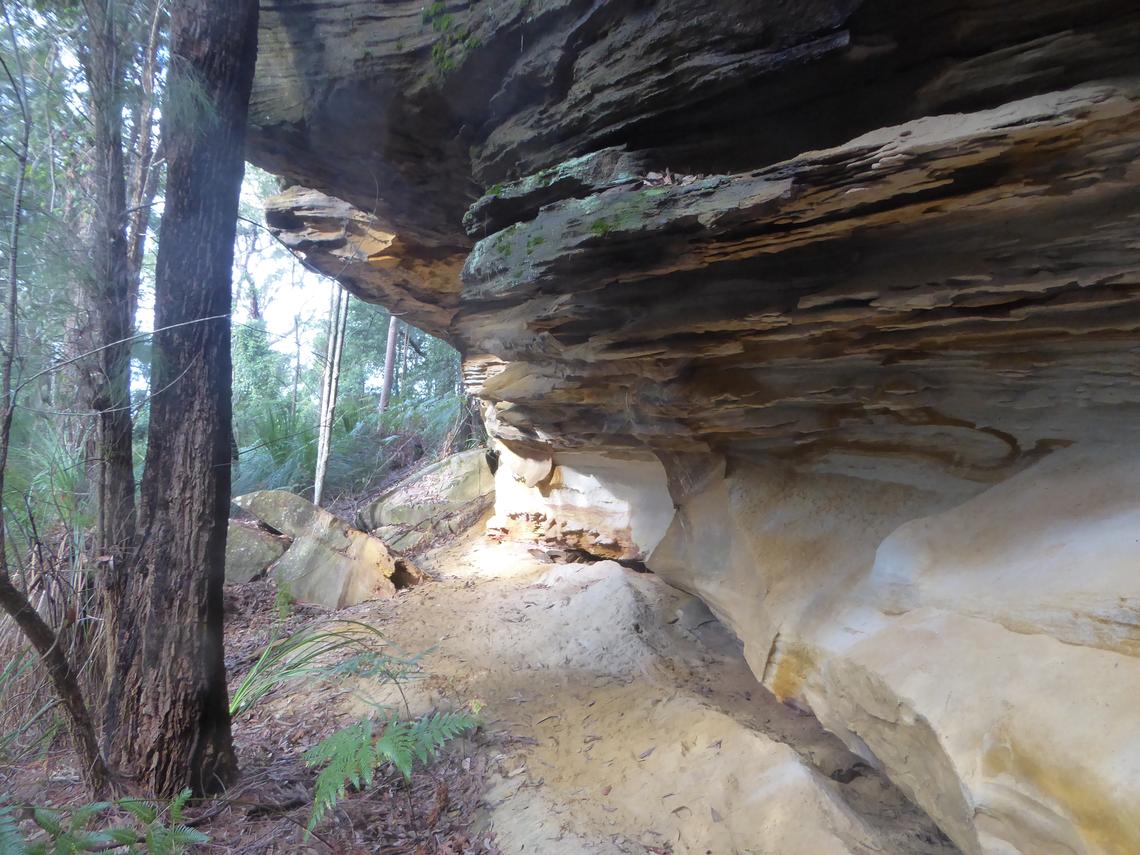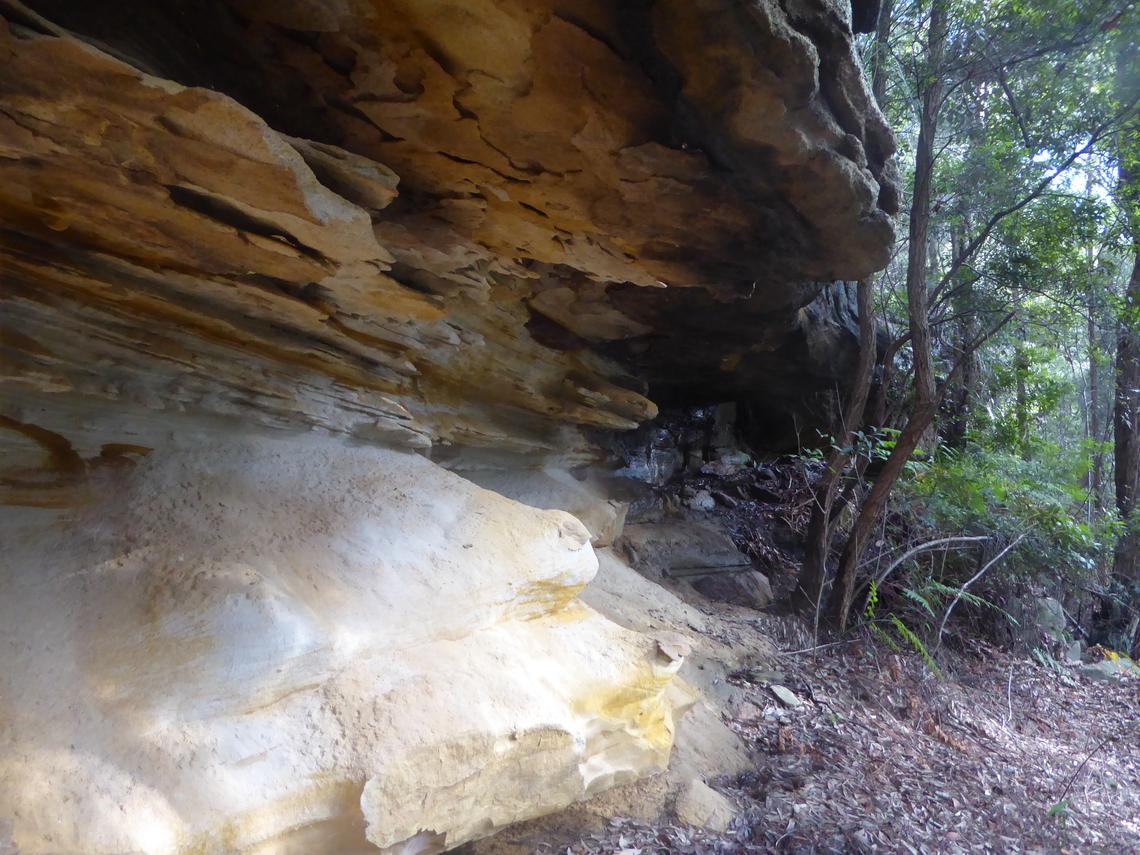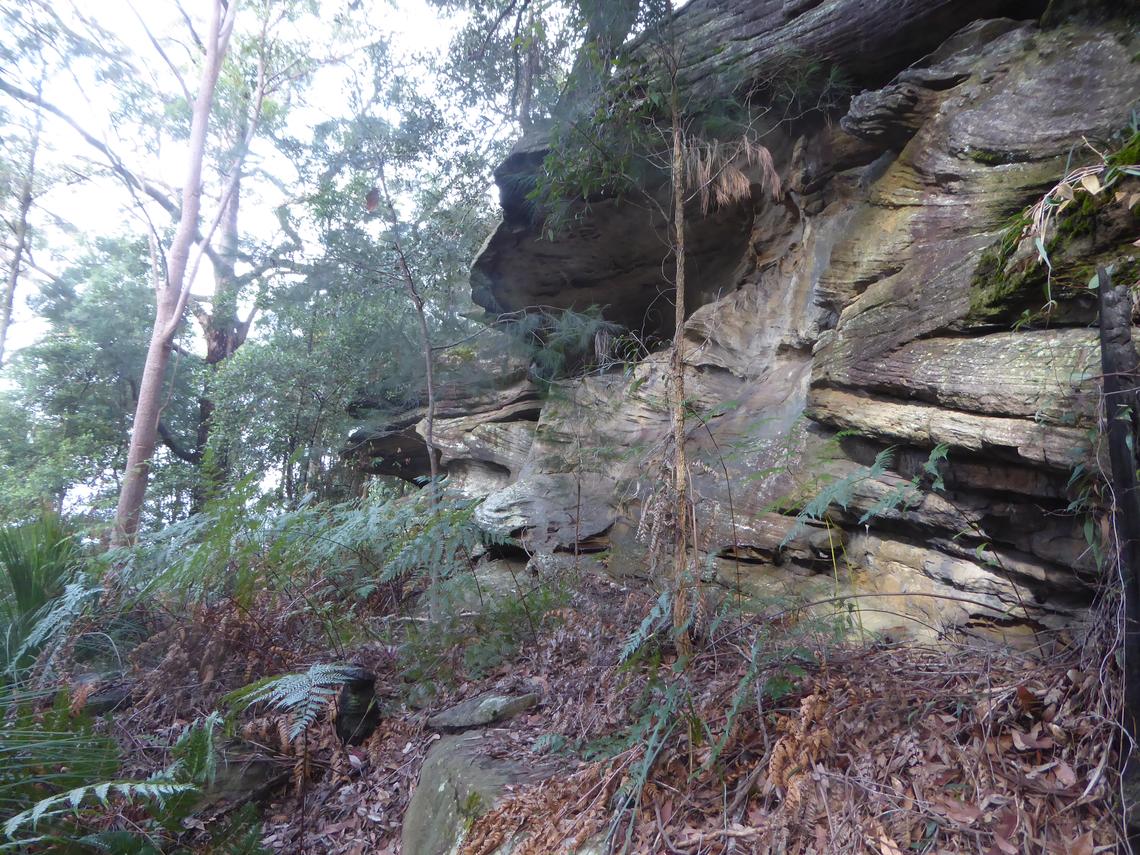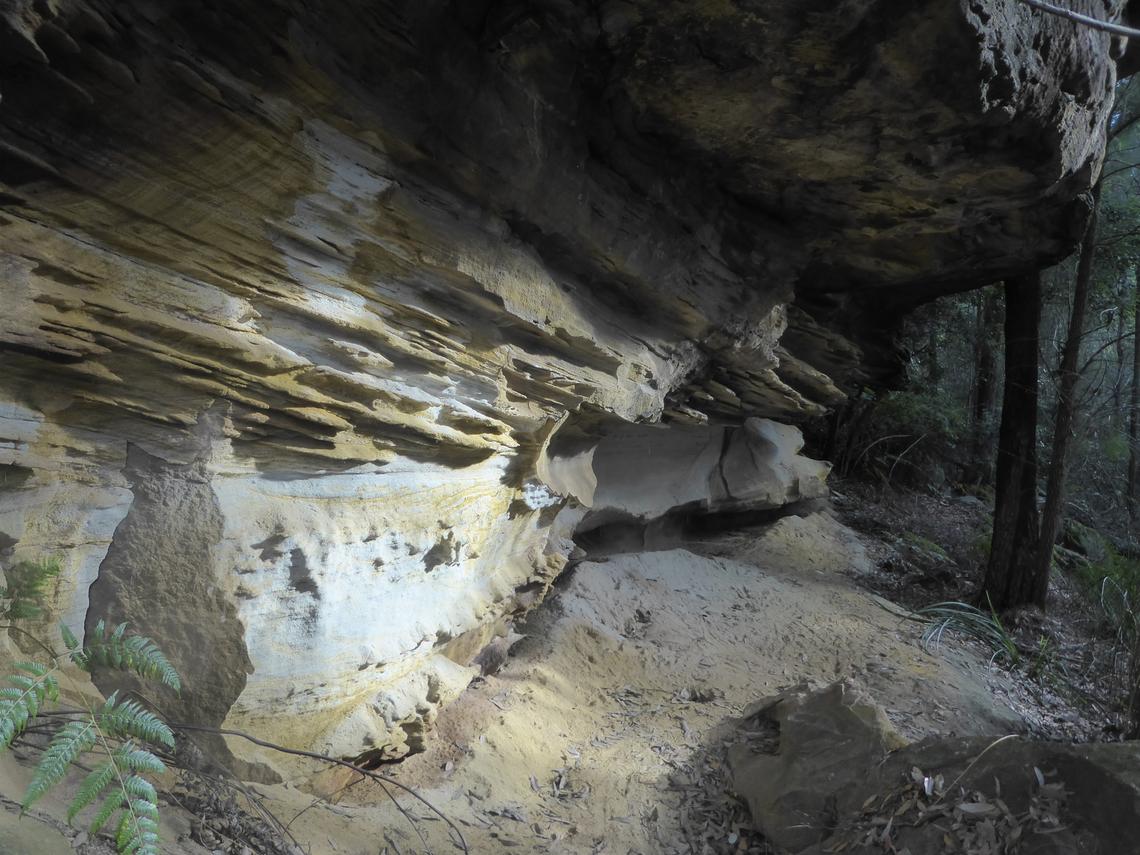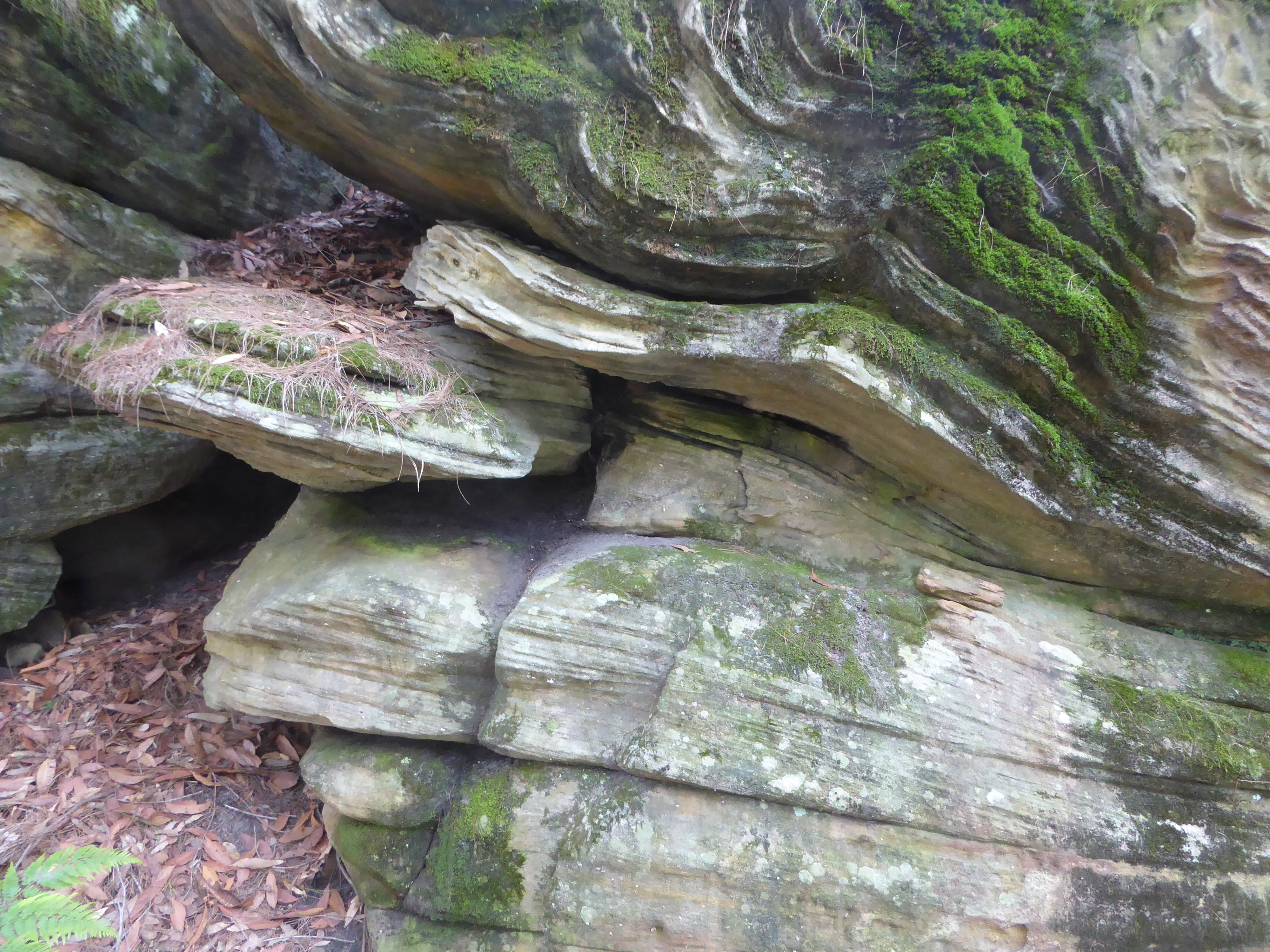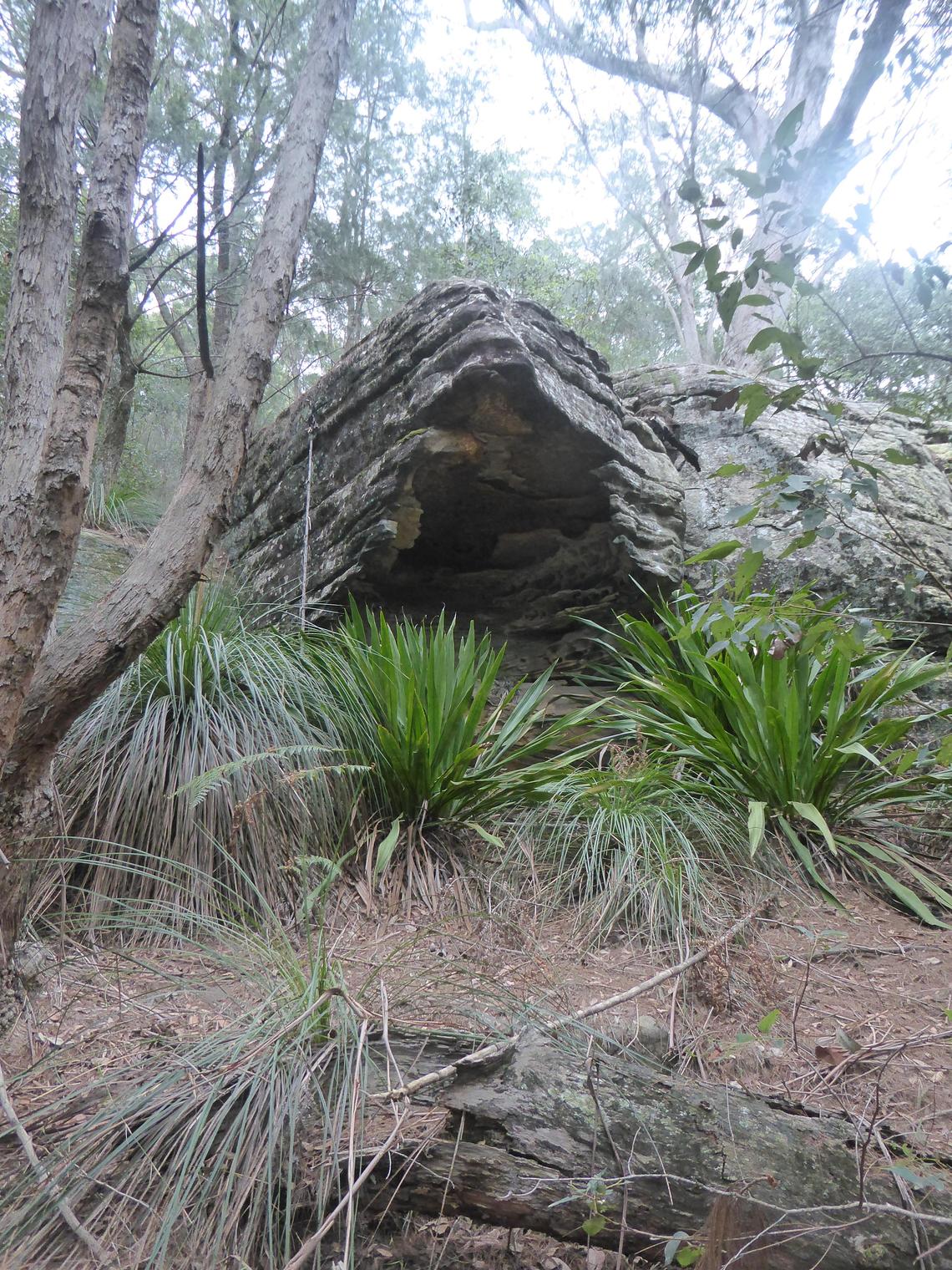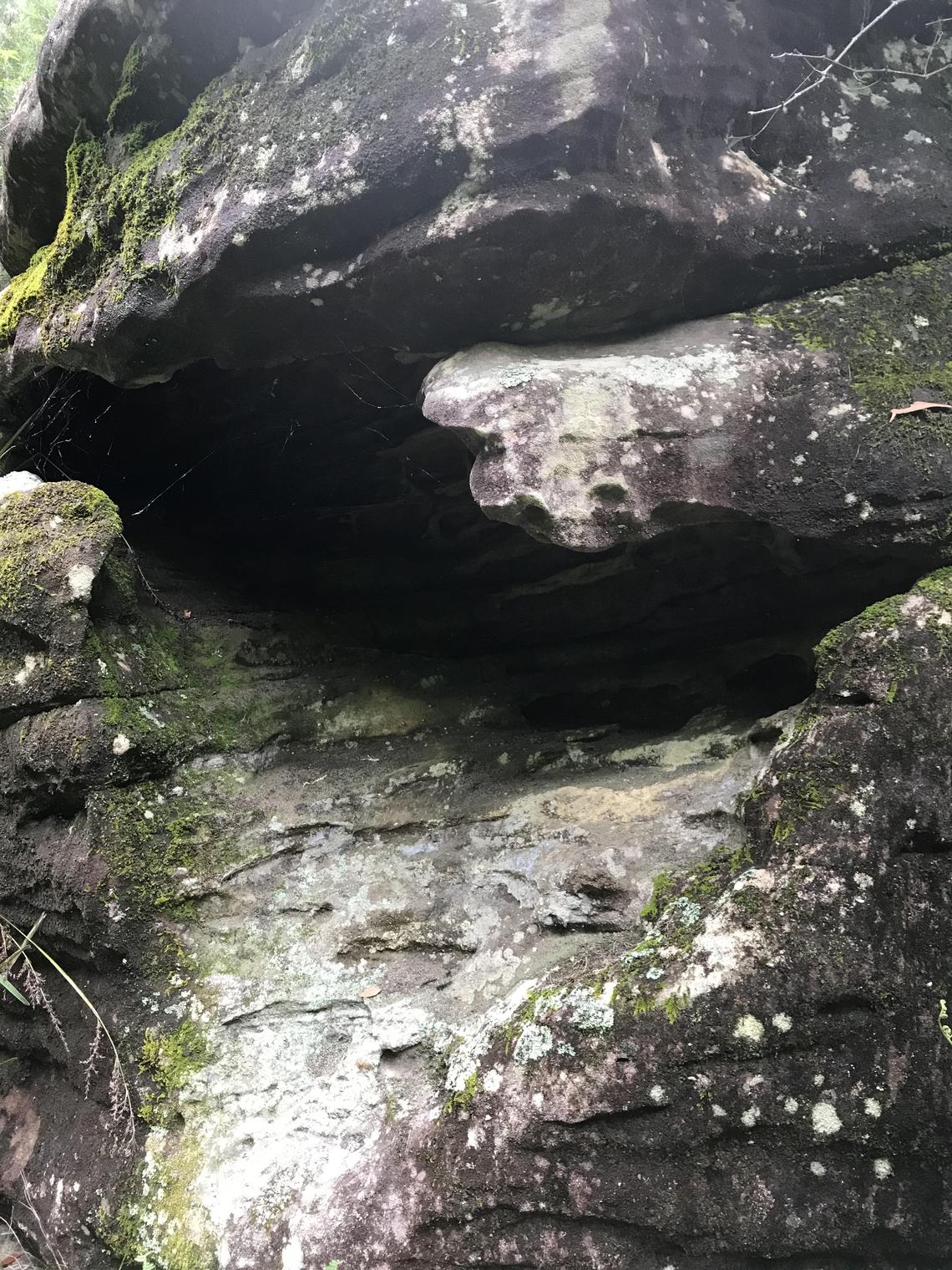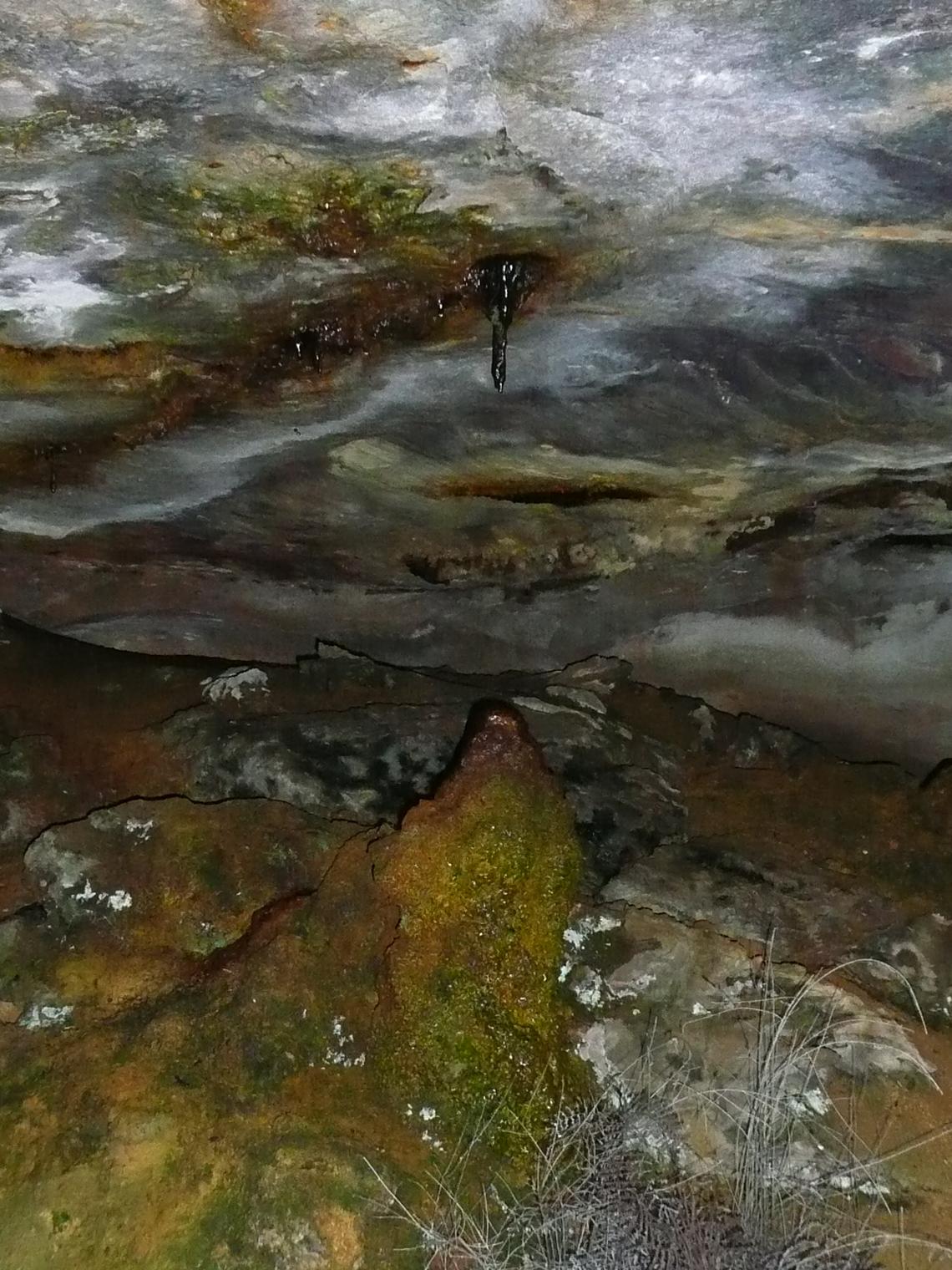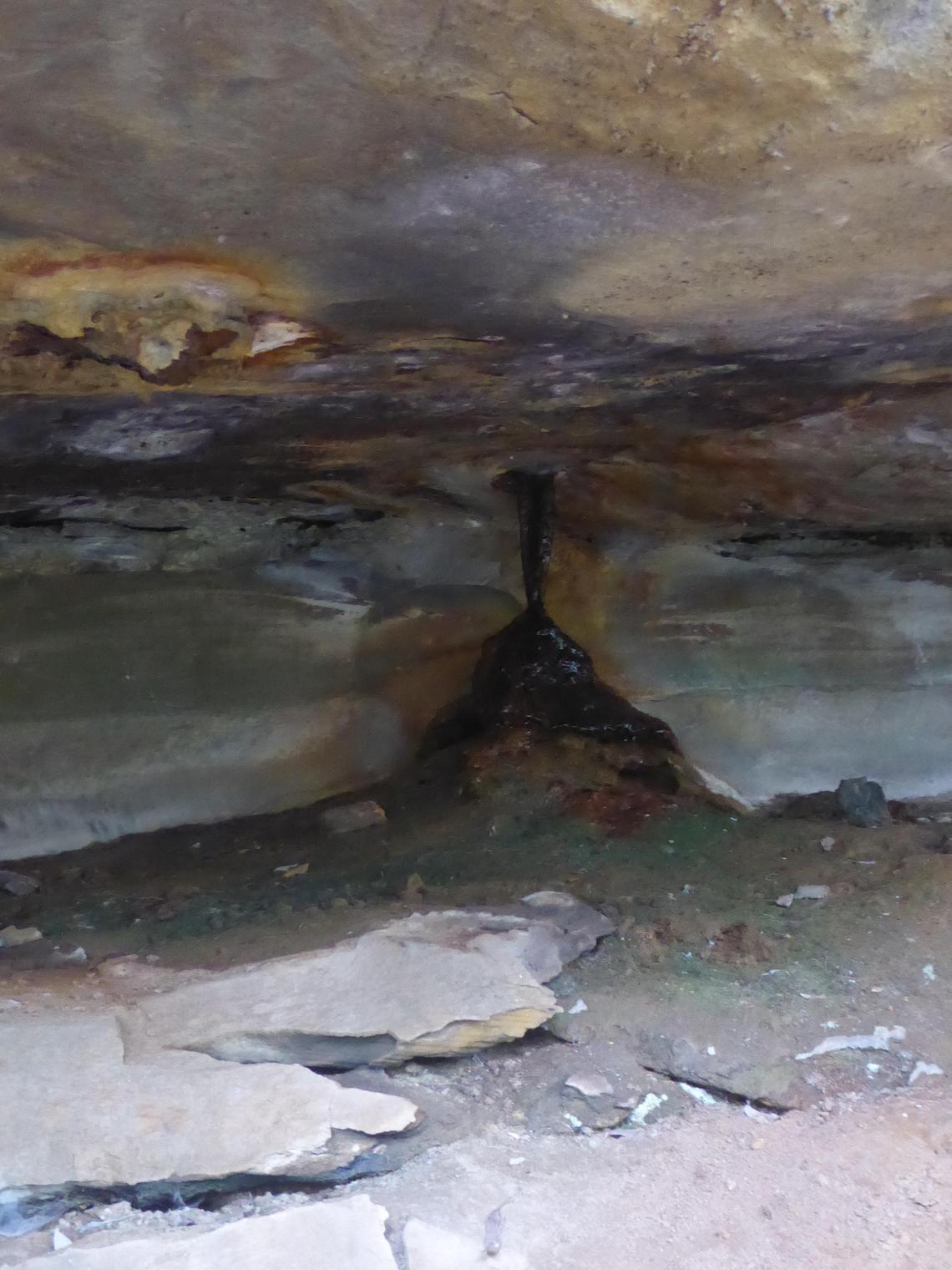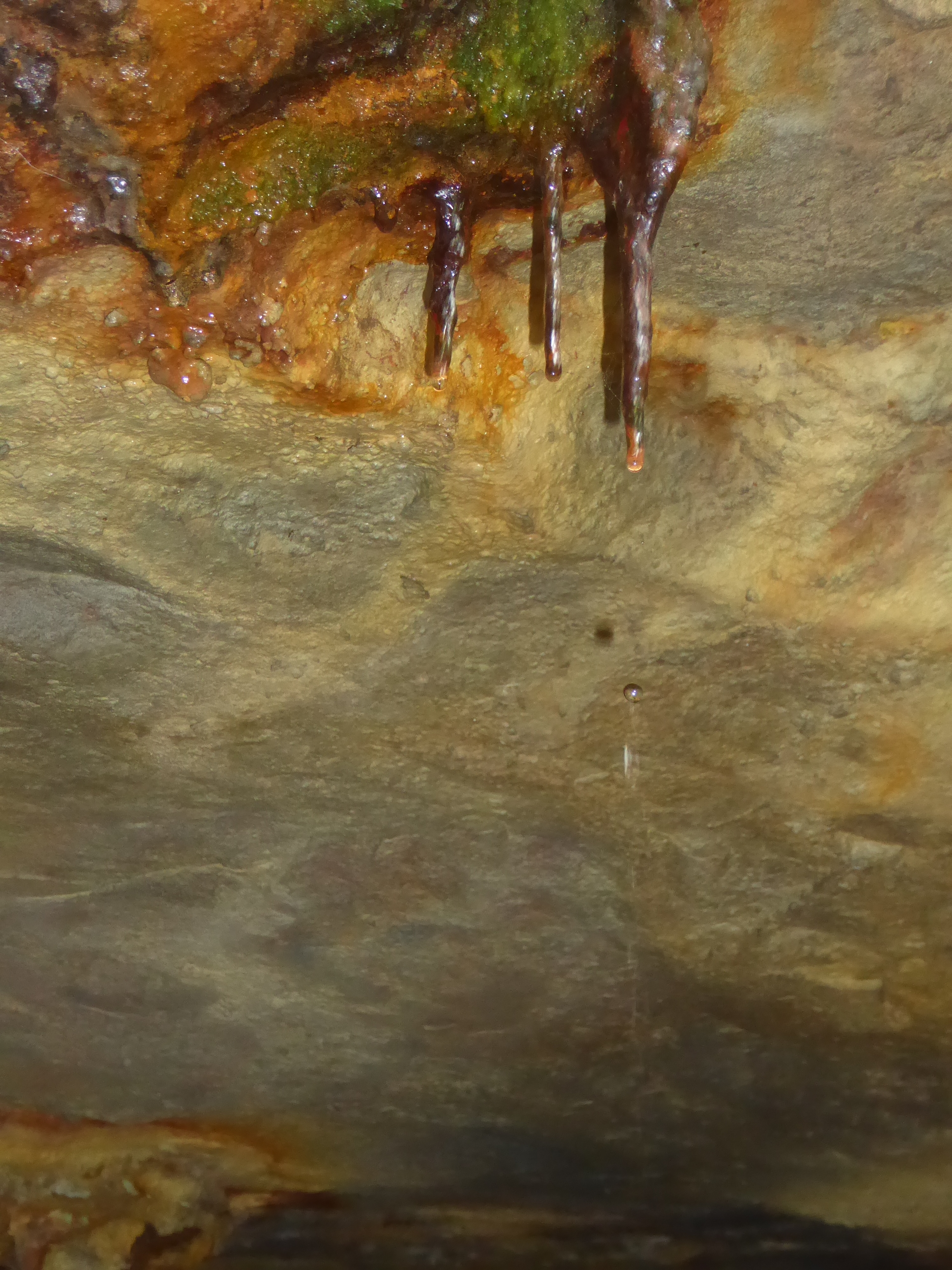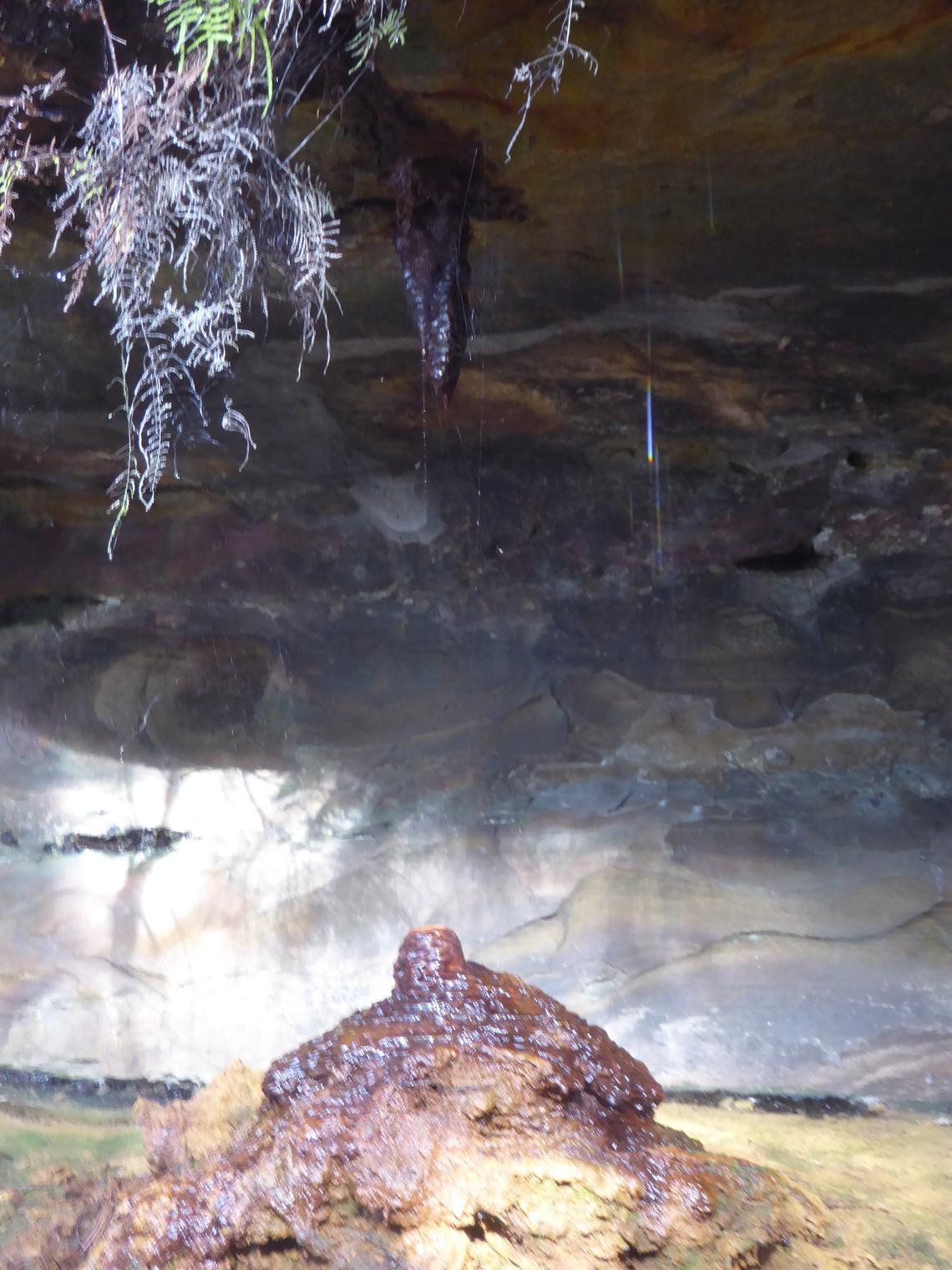
0431 857 407
Katandra Geology
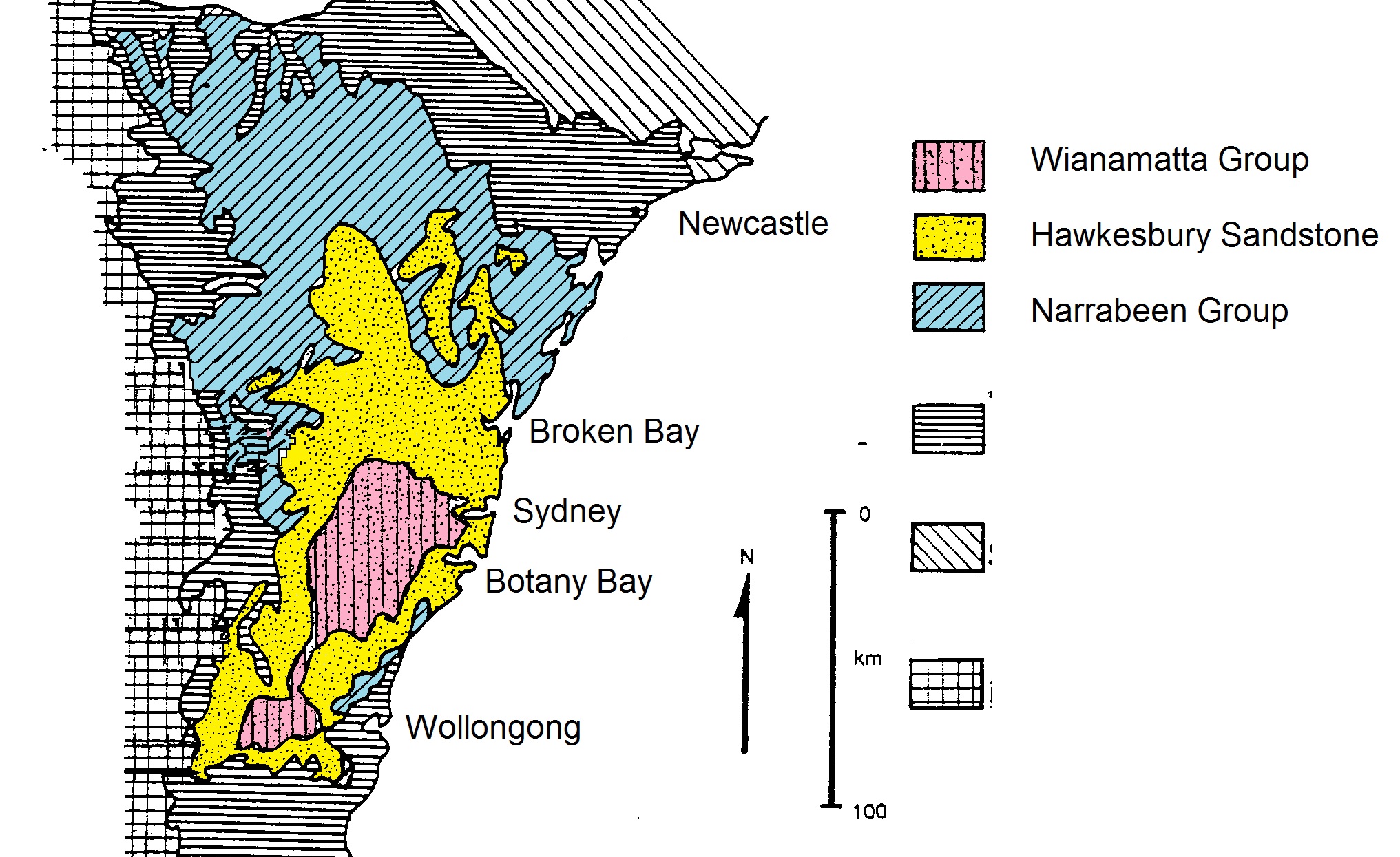
Hawkesbury Sandstone
Katandra Bushland Sanctuary was established following a gift of land to the people of NSW by Harold Seymour. Katandra is dedicated to the study and preservation of native flora and fauna of the Hawkesbury Sandstone country.
Hawkesbury Sandstone is a sedimentary rock made from sediments that were laid down in the Middle Triassic period between 180 and 220 million years ago, around the time when dinosaurs first appeared on Earth. At this time almost all the Earth's land mass was concentrated into a single "supercontinent", centred more or less on the equator and spanning from pole to pole, called Pangaea. About this this time this land mass
Rock types in the Sydney basin. Hawkesbury Sandstone (yellow) lies on top of the older Narrabeen group of rock layers (blue) and under the younger Wianamatta shales (pink). (Source – Australian Plants Society)
began to break into two masses known as Gondwana and Laurasia. Gondwana itself then also broke apart forming most of the landmasses in today's Southern Hemisphere, including Antarctica, South America, Africa, Madagascar and the Australian continent, as well as the Arabial Peninsular and the Indian subcontinent which have now moved entirely into the Northern Hemisphere.


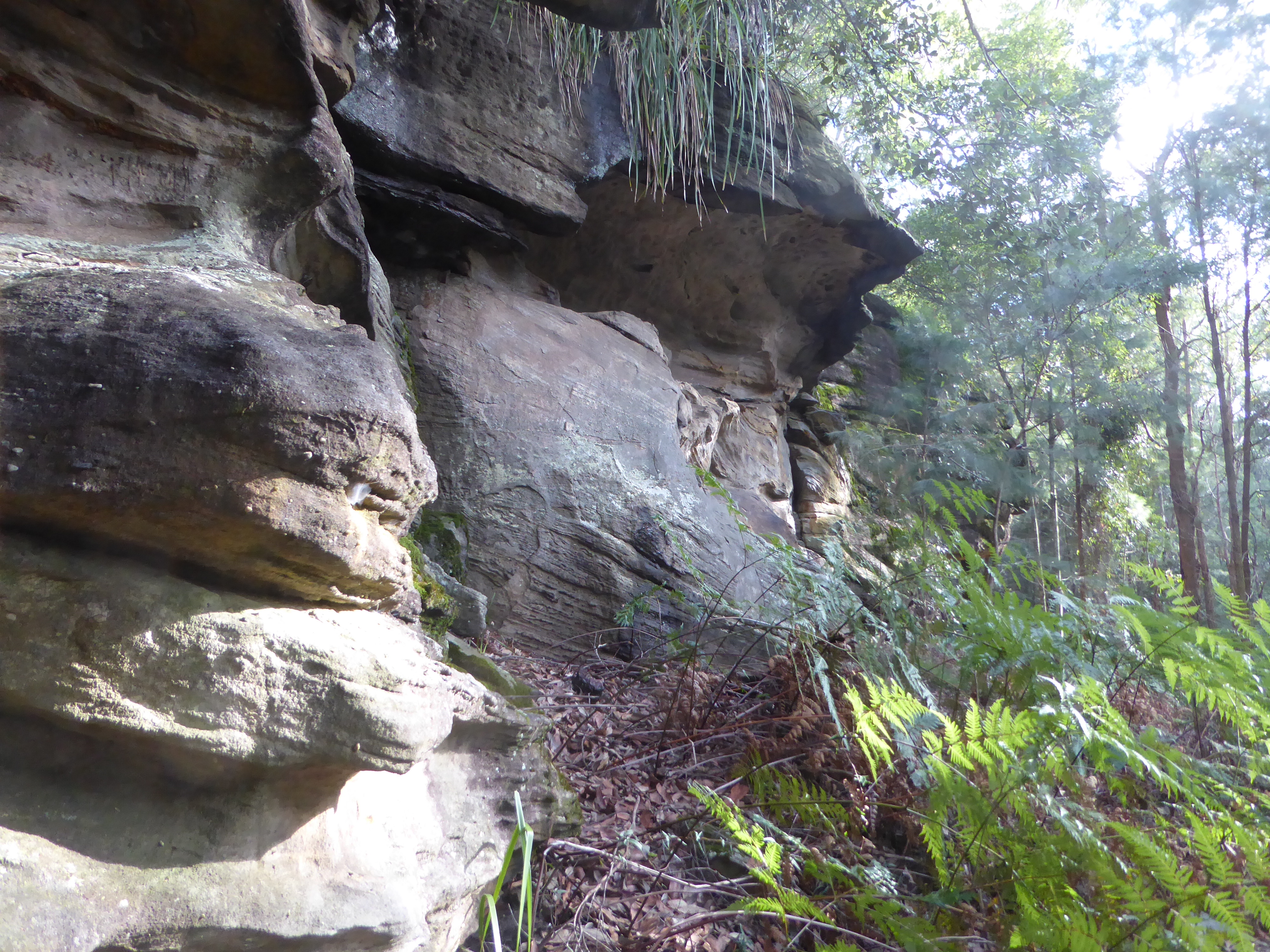
The escarpment along which Katandra exists, located about 2 km inland from the coast, is made of Hawkesbury Sandstone on its upper levels overlying the Narrabeen group layers which are exposed much lower down the slope, below Katandra's boundary . The steepness of the escarpment produces some beautiful caves and rock formations.
Geological phenomena existing in Katandra include
Cross-bedded units - varying in thickness and lateral extent.
Overhanging cliffs and "caves" - generally formed by different rates of weathering of softer and harder stone and gravitational collapse of jointed blocks of sandstone.
Jointed blocks of stone gravitated away from clifftops.
Sculptured weathering effects on a poorly cemented sand layer.
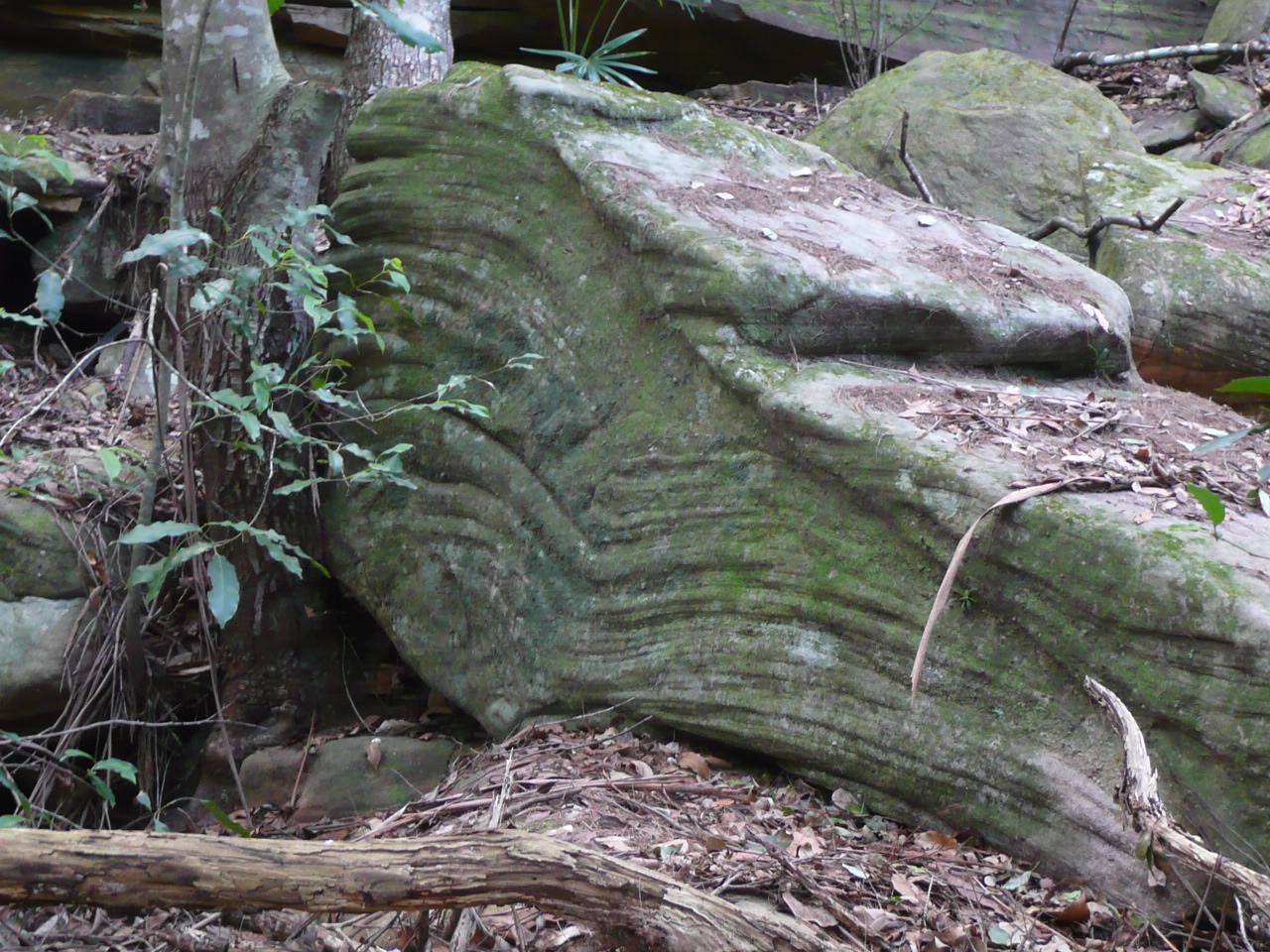
Slump structures / contorted bedding - thought to be a consequence of disturbance (by earth tremors or other causes) of the sediments when they were in a semi-consolidated, plastic state.
Dripstone formations resulting from downward moving water depositing iron oxides, silica and minor amounts of calcium carbonate on the roof and floor of caves.
Washout or scour and fill structures - formed by streams washing out weakly consolidated sediments and then depositing new materials.
Source - Katandra Bushland News (Autumn 2017 edition)
